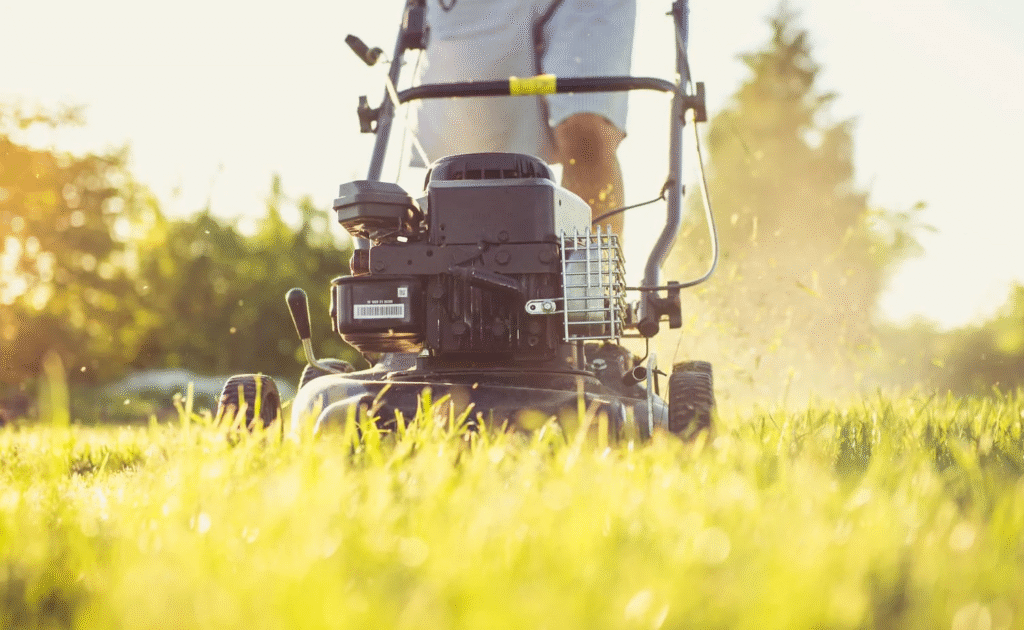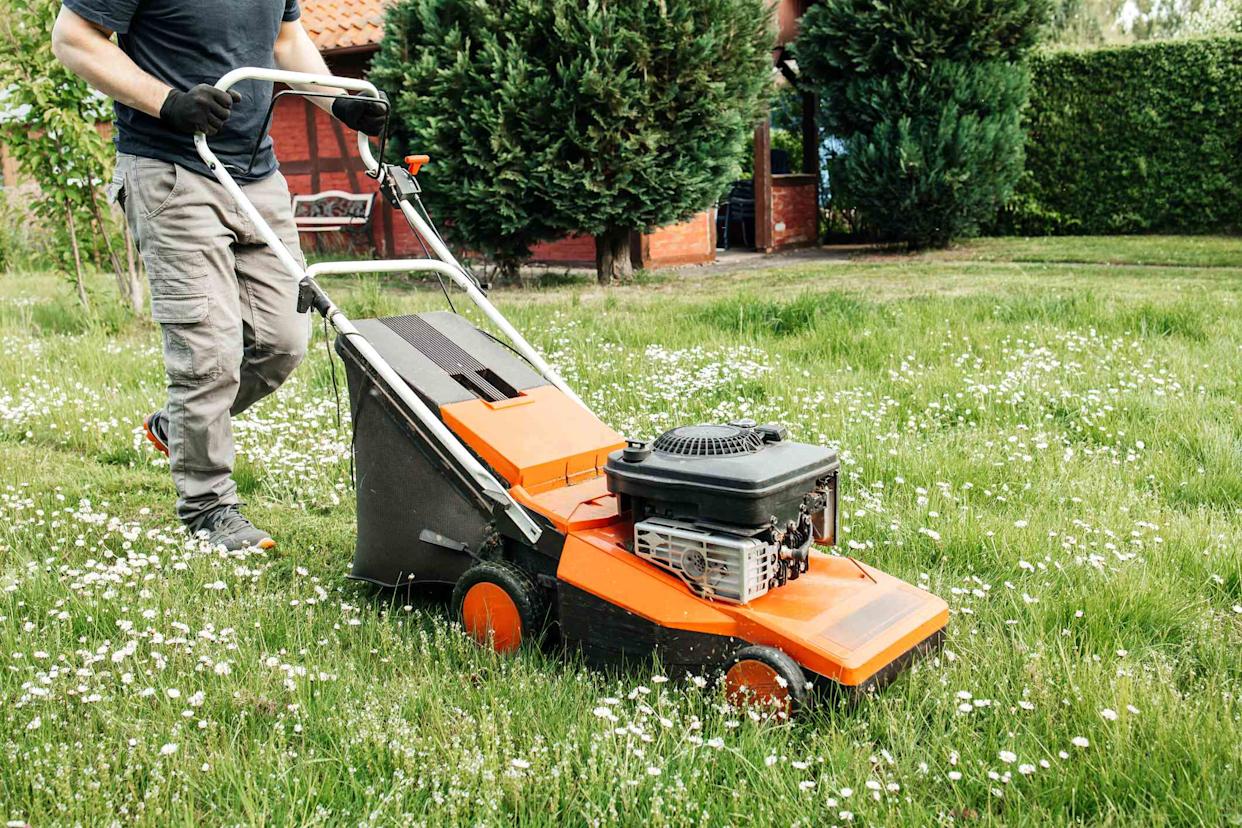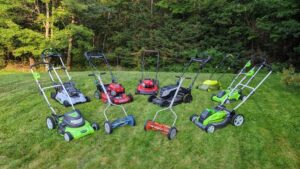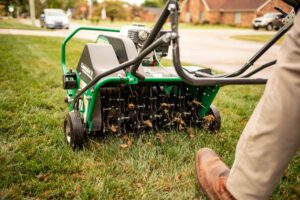Why Your Lawn Mower Starts Then Dies: Troubleshooting Guide for Homeowners
Most homeowners have experienced the frustration of a lawn mower that starts up promisingly—only to sputter and die moments later. This common problem can derail your yard maintenance schedule and leave your lawn looking unkempt. Fortunately, with some basic troubleshooting knowledge, you can often diagnose and fix these issues yourself without an expensive trip to the repair shop.
Understanding Why Your Mower Starts But Won’t Keep Running
When your lawn mower starts then dies, it’s typically indicating one of several core issues: fuel delivery problems, air intake restrictions, or ignition system failures. Each of these systems must work harmoniously for your mower to run properly. A momentary start followed by an immediate shutdown offers important diagnostic clues about which system is failing.
Common Causes When Your Push Mower Runs Then Dies
The frustrating cycle of a mower that starts but immediately stops often points to specific mechanical issues that can be addressed with proper troubleshooting. Let’s explore the most common culprits behind this behavior.
Fuel System Issues

Contaminated or Old Fuel
One of the most frustrating lawn care situations is when your mower starts up but quickly dies. This common problem—whether your push mower runs then dies or your riding lawn mower chugs and dies—is typically caused by one of several key issues that can be diagnosed and often fixed without professional help. Let’s examine the main culprits and how to address them.
Fuel System Issues
Contaminated or Old Fuel
When fuel sits in your mower over long periods, particularly during winter storage, it begins to break down. Over time, untreated fuel loses its volatility, with the lightest chemicals evaporating first, leaving a heavier gasoline that doesn’t combust properly.
A lawn mower running on degraded fuel typically runs slowly and eventually stalls once the engine can no longer effectively combust the fuel. This occurs because gasoline can start to degrade after just 30 days of storage.
How to identify bad fuel:
- The fuel has a sour smell that’s much stronger than fresh gasoline
- Your mower is difficult to start, idles roughly, stalls out frequently, or makes unusual pinging sounds
- The color of the fuel has darkened considerably—fresh gas is light colored while oxidized gas appears darker
Solution:
- Drain the old fuel from both the tank and carburetor float bowl
- Clean the carburetor with carburetor cleaner to remove any residue
- Refill with fresh fuel (consider adding a fuel stabilizer)
- For severe cases, you may need to replace fuel lines that have become gummy or brittle
Carburetor Problems
A dirty carburetor is often indicated by black smoke, increased fuel consumption, and a stuttering or stalling engine. When the carburetor can’t properly mix air and fuel, the engine will start but quickly die as it’s unable to maintain combustion.
The carburetor ensures that the proper mixture of fuel and air enters the engine cylinder for combustion. When old or bad fuel leaves gummy residue inside the carburetor, it creates restrictions that prevent the right ratio of fuel and air from reaching the engine.

Common carburetor issues include:
- Clogged main fuel jet
- Stuck float valve
- Dirty passages and vents
- Damaged gaskets or seals
Solution:
- Remove the air filter and spray a one-second burst of carburetor cleaner or aerosol lubricant down the throat of the carburetor, then pull the cord. If the engine runs briefly and dies, this confirms a fuel system issue.
- For a more thorough cleaning, shut off the fuel valve, remove the carburetor, and spray carburetor cleaner into the ports and bowl. For severe gumming, you might need to disassemble the carburetor to clean internal components.
- In many cases, rebuilding or replacing the carburetor is necessary when basic cleaning doesn’t solve the problem.
Air Filter Issues
A dirty or clogged air filter is another common reason your lawn mower starts but immediately stops.
A dirty air filter results in symptoms similar to having the choke left on—the engine starts easily but dies after a few seconds unless more air is somehow introduced. As the engine warms up, these symptoms typically worsen.
When an air filter becomes clogged with dirt and oil, it smothers your engine by restricting airflow needed for proper combustion. This reduces engine power and can cause the mower to stall after starting.

Signs of a dirty air filter include:
- Loss of power, especially when mowing tall or wet grass
- Increased fuel consumption
- Engine running rough with sputtering or coughing
- In extreme cases, the engine may not turn over at all
Solution:
- Locate the air filter (typically enclosed in a plastic housing on the side of the engine)
- Remove the cover and examine the filter—paper filters should be replaced if they’re significantly discolored, while foam filters can sometimes be cleaned
- For paper filters, lightly tap to remove loose dirt and replace if heavily soiled
- For foam filters, wash with hot water and dish soap, wring out, then lightly coat with engine oil before reinstallation
Fuel Delivery Issues
Sometimes the problem isn’t with the fuel quality but with how it’s being delivered to the engine.
Symptoms of a bad fuel filter include difficulty starting the engine, engine stalling, poor performance, misfiring, and increased fuel consumption. When the fuel filter becomes clogged, it restricts gas flow to the engine, causing the engine to sputter as the combustion chamber isn’t getting enough fuel.
Common fuel delivery problems include:
- Clogged fuel filter
- Collapsed fuel lines that may worsen when the engine heats up
- Blocked fuel intake in the tank (often from rust or debris)
- Weak or failing fuel pump
Solution:
- Check and replace the fuel filter if it appears dirty or clogged
- Inspect fuel lines for signs of cracking, collapsing, or brittleness
- Clean the fuel tank and blow out any blockages in the fuel lines
- For fuel pump issues, testing and replacement may be necessary
Preventative Maintenance Tips
To avoid the frustration of a lawn mower that starts then dies, follow these preventative maintenance tips:
- Fuel management:
- Use fuel stabilizer when storing your mower for extended periods
- Don’t leave gasoline in the tank for more than 30 days without treatment
- Consider using ethanol-free fuel or fuel specifically formulated for small engines
- Regular maintenance:
- Replace the air filter at least once per season or after 300 hours of operation (more frequently in dusty conditions)
- Change the oil regularly according to the manufacturer’s recommendations
- Keep the underside of your mower deck clear of excessive grass clippings
- End-of-season care:
- Either drain the fuel system completely or add a fuel stabilizer before winter storage
- For long-term storage, consider draining both the fuel tank and the carburetor float bowl
- Perform a thorough cleaning of the carburetor before extended storage periods

When to Seek Professional Help
While many lawn mower issues can be fixed at home, some problems require professional attention:
- If you’re seeing light-colored smoke and having trouble keeping the mower running
- If the carburetor jets are severely clogged or damaged beyond cleaning
- When replacing parts doesn’t solve the problem
- For issues with the ignition system, compression, or engine valves
Conclusion
When your lawn mower starts then dies, it’s trying to tell you something. By understanding the common causes—bad fuel, carburetor problems, air filter issues, and fuel delivery restrictions—you can quickly diagnose and fix the problem. Regular maintenance is your best defense against these issues, helping you avoid the frustration of interrupted mowing sessions and extending the life of your lawn mower.
Remember that safety comes first: always disconnect the spark plug wire before working on your mower, allow the engine to cool completely, and handle fuel with appropriate caution. With proper care and timely intervention, your lawn mower should provide years of reliable service, starting up and running smoothly every time you need it.






